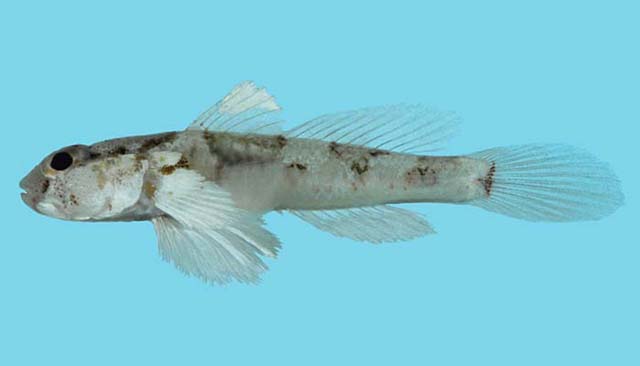| Gobiidae (Gobies), subfamily: Gobiinae |
| 2.7 cm SL (male/unsexed) |
|
reef-associated; depth range 0 - 9 m |
| Indo-Pacific: islands in the Indian Ocean to the Hawaiian and Line islands, north to southern Japan, south to northern Australia and Tonga. |
|
Dorsal spines (total): 7-7; Dorsal soft rays (total): 9-9; Anal spines: 1-1; Anal soft rays: 8-8. Characterized by mainly white body color with short dark brown bar below eye; presence of dark band from rear eye to nape; side of body with irregular brown markings; large brown saddles below dorsal fins and dorsally on caudal peduncle; rounded caudal fin; longitudinal scale series 27; median predorsal scales absent; prepectoral and prepelvic areas without scales; depressed head, head depth about 1.3 in head width; opening of gill restricted to base of pectoral fin; depth of body 5.3-6.0 in SL (Ref. 90102). |
| Occurs on sandy bottoms of lagoon and seaward reefs to a depth of over 9 m. |
|
(Ref. 96402)
|
| harmless |
|
Source and more info: www.fishbase.org. For personal, classroom, and other internal use only. Not for publication.
Page created by Jen, 05.08.02,
php script by kbanasihan 06/09/2010 ,
last modified by
dsantos, 20/08/10

